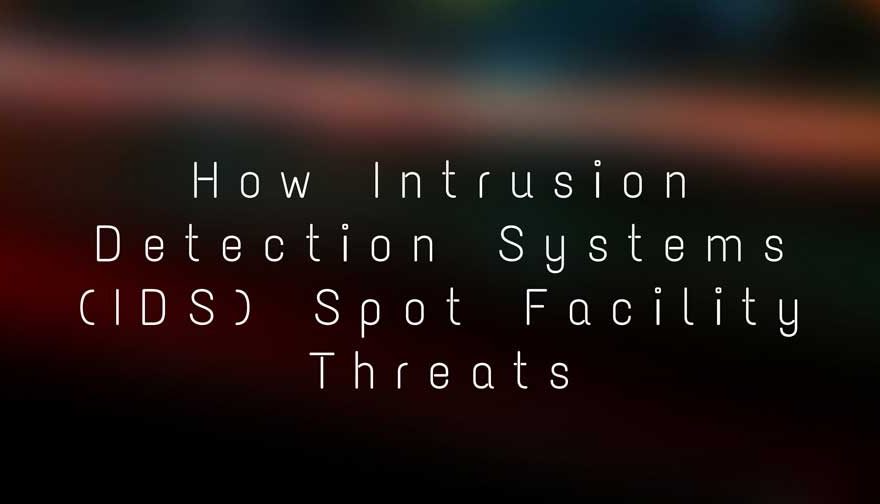Cybersecurity is an essential part of running any business. Without the right solutions in place, hackers can capture your data and hold it hostage. With the rise of hacking events, such as phishing scams and ransomware, it’s crucial to utilize high-quality cybersecurity systems. One recent option that works well is an intrusion detection system (IDS). We will look into how this system works and why it could be ideal for your business.
What is an Intrusion Detection System (IDS)?
As the name suggests, this system works by monitoring your business network for signs of unwanted intrusions (i.e., hackers or viruses). An intrusion detection system is only one layer of a larger cybersecurity strategy that can help your company stay safe online. Usually, an IDS is a mix of automated software and IT security professionals actively monitoring your network.
Types of IDS Solutions
Depending on the size and structure of your business, you may need to rely on multiple types of IDS solutions. This system can work in one of two ways: host-based and network-based. Let’s break down each option.
- Host-Based IDS – In this case, the system exists on a host computer or terminal and monitors all connections to the host. The advantage of a host-based IDS is that it monitors all aspects of the host device, ensuring that nothing gets through. The disadvantage is that the system doesn’t look at the rest of the network, so it may not eliminate all threats.
- Network-Based IDS – If you have multiple devices connected to a network, you’ll need a network-based IDS. This system monitors all components, including computers, smartphones, tablets, and other devices. This “birds-eye view” offers a more comprehensive solution to proactively identify and eliminate potential threats.
Also, keep in mind that you can deploy multiple types of IDS solutions – it isn’t an either-or situation. Usually, companies will utilize both types to monitor high-value machines and get a comprehensive view of the entire network.
How Does an IDS Work?
Because there are so many threats out there, intrusion detection systems need to identify them in a few different ways. The three most common options are signature detection, anomaly detection, and hybrid detection. Let’s see how each model works.
- Signature Detection – As new threats emerge, your IDS needs to keep track of them all in a database. Signature detection involves creating a unique signature for each virus or malware. Doing this ensures that the system can monitor for all threats simultaneously. The other benefit of saving these signatures is that the system can work on different devices without starting the process all over again. Another advantage is that there’s less risk of a false positive because each threat has its own signature.
- Anomaly Detection – One downside of signature detection is that it may not catch new threats (aka zero-day threats). One way to avoid this problem is with an anomaly detection system. In this case, the system builds a “normal” model of the network based on routine activity. So, anything that deviates from normal behavior is flagged as a potential threat. Then, the IDS monitors that element to determine if it’s harmful or not. The biggest challenge of anomaly detection is creating an accurate baseline. Also, it’s easier to have false positives or negatives.
- Hybrid Detection – Typically, the best intrusion detection system uses a mix of both signature and anomaly detection. This way, the system can reduce the chance of a false positive while also spotting zero-day threats. Most companies use a hybrid model to get the best results.
IDS vs. a Firewall
Although an IDS is a critical component of any cybersecurity system, it only works if you have security professionals monitoring your network. The IDS itself only alerts you if an anomaly or threat is detected. The system does not prevent or eliminate the threat. So, if you don’t have any specialists protecting your network, threats can get through unabated.
A firewall is a proactive security feature that blocks any unwanted intrusions. For a firewall to work, the IT team has to program-specific parameters. Anything within those parameters is let in, while everything else is blocked. A firewall is basically an intrusion prevention system (IPS), not an IDS.
Realistically, you’ll need both solutions for your business. Many new firewall programs sync with IDS solutions to offer multiple layers of protection. This way, if a threat does get through the firewall, the IDS can notify the cybersecurity team of its presence.
Benefits of an IDS Solution
If you’re still on the fence about deploying an intrusion detection system for your business, here are the top reasons to do so:
- Meet Industry Compliance Standards – Some industries require comprehensive cybersecurity solutions since companies manage sensitive data. So, having an IDS in place can ensure that you won’t fail any inspections, leading to costly upgrades.
- Protect Your Data – You may not think your business is a high-value target, but ransomware attackers often hit smaller companies because they’re easier to access. Not only can you avoid costly ransoms for your data, but you can also prevent any interruption to your operations.
- Provide Peace of Mind for Your Clients – Consumers are becoming much savvier about cybersecurity and its impact on their lives. So, users will want to do business with a company that takes these threats seriously. Deploying an IDS ensures that you can instill confidence in your clients so that they’ll keep coming back again and again.
- Stay on Top of New Threats – Unfortunately, cybersecurity is a bit of an arms race. As new protection systems come online, hackers will work diligently to circumvent them. An IDS helps you adapt to these new threats so that they don’t derail your business.
